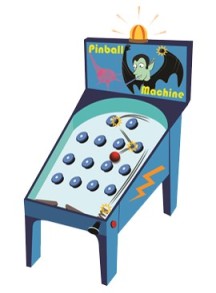Personal Learning Challenge: This week’s personal learning challenge has to do with time management skills, or my lack thereof. As I touched on earlier procrastination is not really an issue of mine. I tend to adhere to a pretty strict philosophy of what Dr. Oakley calls, “Eat your frogs first.” I just call it getting it over with so it’s not hanging over my head…Both philosophies deal with doing whatever is the hardest, most disliked aspects of whatever you are doing or learning first. This method has served me pretty well over the years with the exception of certain occasions. For example, when the “frog” is a research paper, or a huge section of difficult reading, or even a colossal mess created by my 2.5 years old and 12 month old. What tends to happen is that I spend too much time “eating my frog” and don’t have time for the other aspects of my day. I am suffering from a lack of good planning, and time management skills.
Solutions Based On: “Eating your frogs first” and tips for creating and using a daily planner journal.
New Solution To Try: On of the most interesting aspects of this weeks material, for me, was the fact that if you don’t produce a physical copy of your task they will haunt the minuscule space in your working memory. With that in mind I feel that since I don’t ever write lists, or tasks I am making my life that much harder. My new solution is going to be to keep a planner journal and write out nightly to-do lists. The following are helpful hints and tips to maximize the effectiveness to-do lists and well allocated time.
- Dr. Oakley recommends keeping a weekly list of longer term projects and tasks as well as daily list comprised the previous night. (This is done so your unconscious mind can chew on these tasks while you sleep)
- Schedule other “random” tasks into your learning. (I.e. washing the car scheduled with time working on the processes associated with finishing a research paper.)
- Don’t just write the tasks prior to their completion, notes on outcomes and what was effective and what did not work also benefit you for next time.
- ALWAYS PLAN YOUR QUITTING TIME!! (This is almost as critical as your working time, as it gives you a “clocking out time”)
- Schedule in active leisure time as studies show that actively pursuing leisure time results in better performance in non-leisure time than in individuals who do not actively pursue leisure time.
- Eat your frogs first. (Do the most despised thing or hardest thing first)
- Believe in the Law of Serendipity which says that Lady Luck favors those who try. (This helps when you become overwhelmed by the sheer quantity of your tasks, as it reminds you to just give it a shot.)
So in order to not run out of time because I spent waaaayy to much time focusing on the first, hardest task on my list I am going to try to schedule out my day the night before, and the sunday before. I will allocate my time into 30 minute to 1 hour chunks of time. I will schedule in the academic, the leisure, the random, and also a quitting time. Look for future updates on my progress with being better organized and how that will make me a more effective learner. Until next time.



